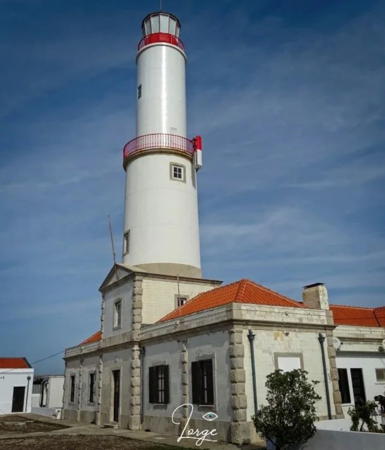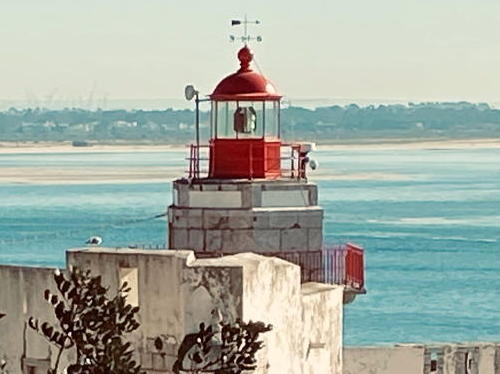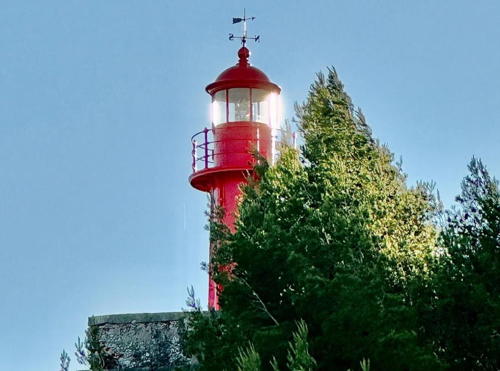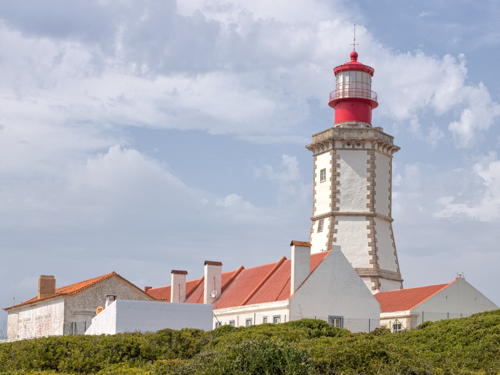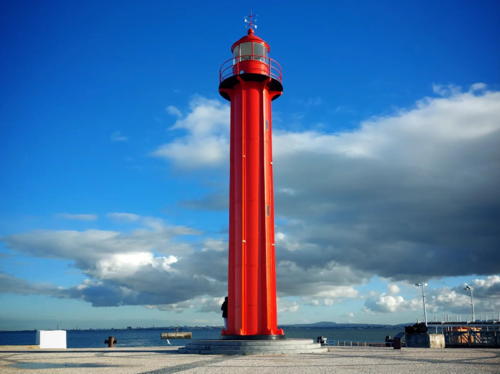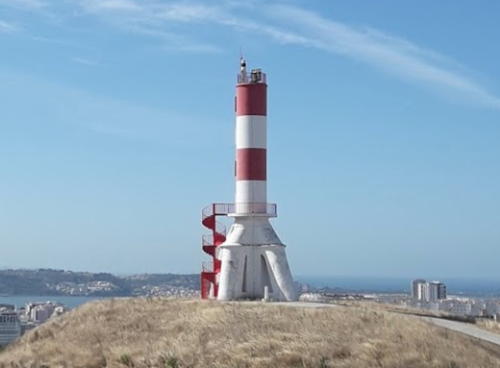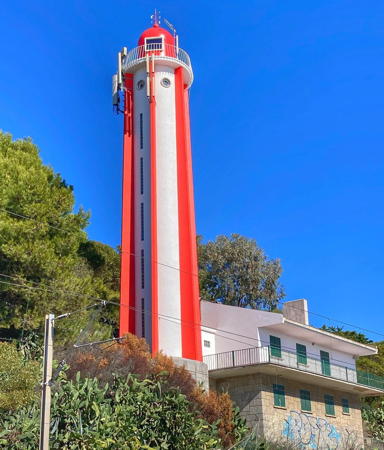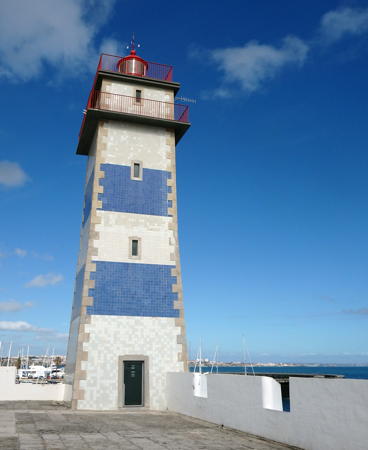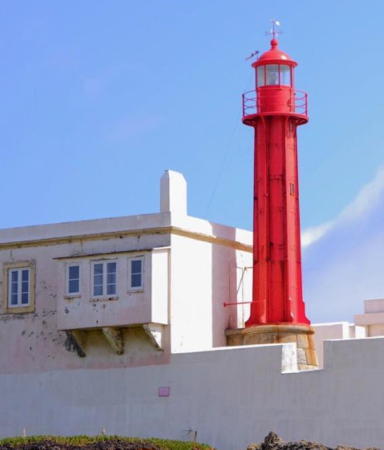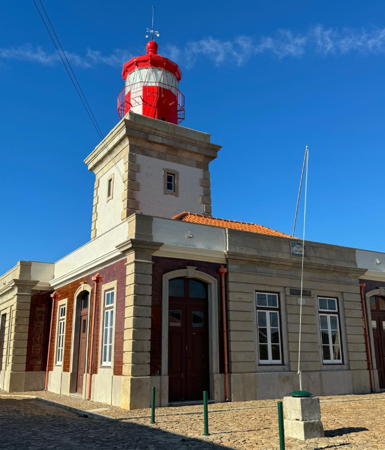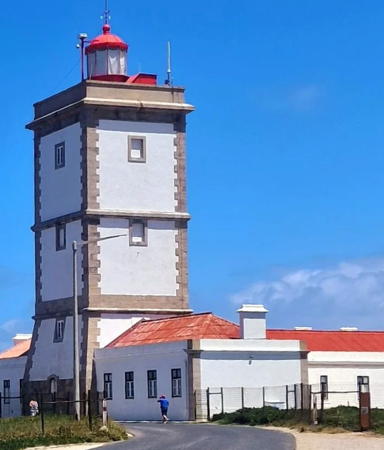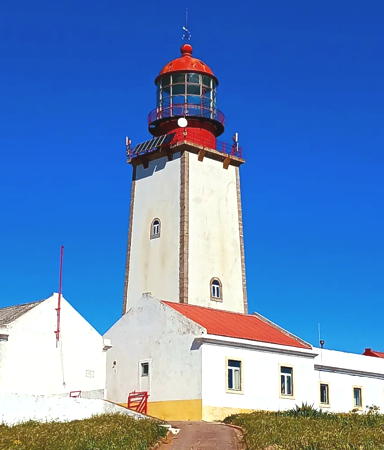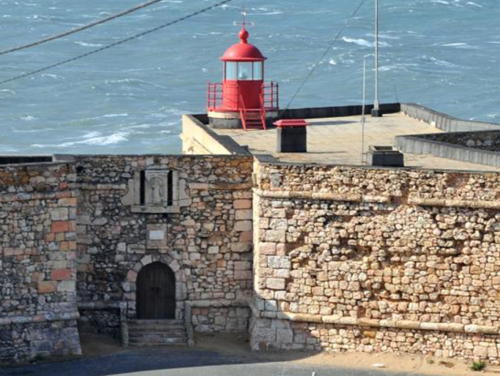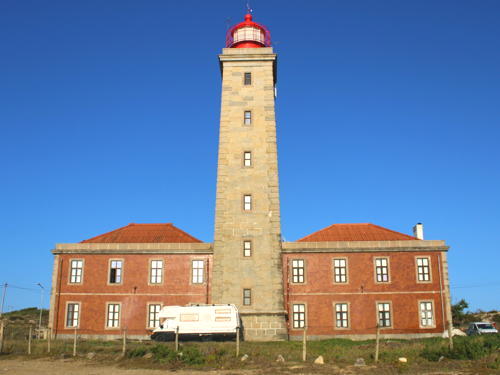Facing the Atlantic Ocean at the southwestern corner of Europe, Portugal (officially the Portuguese Republic, República Portuguesa) has a very distinguished maritime history. Portuguese sailors launched and led the European age of discovery and Portuguese ships have been returning home from the far corners of the globe for about 600 years. It's not surprising that lighthouses have played an important role in Portuguese culture and that they are treasured national monuments today.
This page has information on the lighthouses of the central part of the Portuguese mainland, from Sines through the Leiria District, including the metropolitan area of the capital, Lisbon. There are separate pages for Northern Portugal and Southern Portugal. Lighthouses of the Azores and Madeira (islands discovered and settled by the early Portuguese explorers) are also on separate pages.
The Portuguese word for a lighthouse is farol, plural faróis; a small lightbeacon is often called a farolim. In Portuguese ilha is an island, ilhéu is an islet, cabo is a cape, ponta is a promontory or point of land, rocha is a rock, recife is a reef, baía is a bay, estreito is a strait, rio is a river, and porto is a port or harbor.
Formerly owned by the Navy, the lighthouses in Portugal are now operated by the Lighthouse Directorate (Direção de Faróis), an agency of the National Maritime Authority (Autoridade Marítima Nacional).
ARLHS numbers are from the ARLHS World List of Lights. PT numbers are from the Portuguese Navy list, as recorded by the Portuguese Wikipedia. Admiralty numbers are from volume D of the Admiralty List of Lights & Fog Signals. U.S. NGA List numbers are from Publication 113.
- General Sources
- Faroís
- Lighthouse information from the Direção de Faróis.
- Online List of Lights - Portugal - West Coast
- Photos by various photographers posted by Alexander Trabas. Many of the photos for this area are by Eckhard Meyer.
- Lighthouses in Portugal
- Excellent aerial photos posted by Marinas.com.
- Faróis de Portugal
- Portuguese Wikipedia article on the country's lighthouses. Near the bottom of the page are links to pages for the individual lighthouses. The photos are also available in Wikimedia's Lighthouses in Portugal category.
- World of Lighthouses - Portugal
- Photos by various photographers available from Lightphotos.net.
- Faróis de Portugal
- Fine recent photos posted on Flickr.com by Carlos Olmo Bosco.
- Phares d'Europe
- Photos posted by Alain Guyomard and Robert Carceller.
- Lighthouses of Portugal
- Historic postcard images collected by Michel Forand.
- Leuchttürme Portugals auf historischen Postkarten
- Historic postcard images collected by Klaus Huelse.
- GPSNauticalCharts
- Navigational chart for Portugal.
- Navionics Charts
- Navigational chart for Portugal.
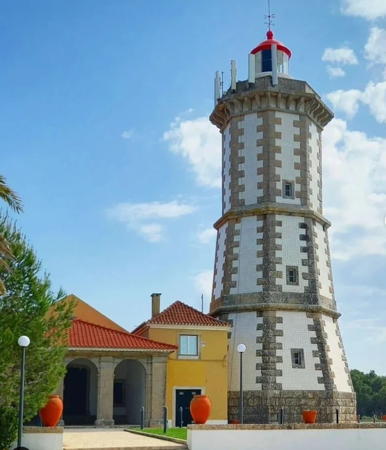
Farol da Guia, Cascais, March 2022
Instagram photo by Jose Carlos Pereira
